Question One
“When someone comes into our room,
we stand as a sign of . . . ?”
“Respect!”
I had a policy in my room that if the children’s score was cruising at a 10 on our blackboard and a visitor walked into our room, if everyone rose and smiled silently and then sat down on my signal, after our visitor left, I would grant them an 11 which was a rare event. That 11 entitled them to a freeze pop party and bragging rights with other classes.
Believe it or not, I actually had a principal who was disdainful of the idea of children standing when he walked into the room. “And knock off that standing up stuff”, he said. He got some pushback from me. I explained to him how I was raised and how it lets the person walking in, no matter their station in life, know that they are appreciated and respected.
I know it looks very old school. But sometimes old school is good school. And, of course, I had to ask him, “You mean you didn't stand up when your grandmother came in the room?” And there I go again, Boyd Holmes scoring points left and right!
Question Two
“The good ones pay for the bad ones
because nothing is . . . .”?
“Free!”
We had a running count of pluses and minuses on my blackboard. Anytime I saw students do a small positive thing, like proactive behavior, respectful actions with instruments, or synergizing with peers, I would not say anything but would rather put a check under the plus column. Conversely, if I saw a little things that I didn't like, a check was made under the minus column.
The expectation was that they were to have more pluses than minuses by the end of class. I could ceremoniously tell their teacher when they were picked up how many pluses if they earned that day.
For example, suppose they had ten pluses and five minuses.
Before lining them up to leave, I would always ask, “Would you like me to erase the bad ones?”
“Yes!”
“But you know what I have to do, right?” They were glumly nod their heads.
“For every bad one in the minus column that I erase, I have to erase a good one from the plus column because the good ones pay for the bad ones. Just like in life, when you make mistakes, you pay for those mistakes with good choices you've made on other days, days when you saved a little bit of extra money, worked a little longer, tried a little bit harder, thought a little bit smarter.”
I would erase a “bad one” followed by a “good one”, back and forth, until all the bad ones were gone. I would proudly say, “You have five pluses and no minuses.”, a little more reserved, “I know it’s not yen pluses and only five.But now you have NO bad ones! And you’ll do better next time!” I would then whisper, “It's like those bad ones were never there. We don't have to tell your teacher about the bad ones. That'll just for you to know”
When visiting grandparents on Grandparents’ Day heard their grandkids exclaim that “nothing was free” at the end of my class, their straight-faced comment was “I’m glad someone’s teaching them this because nobody ever taught it to their parents”.
Question Three
“You touch . . . .?”
“You take!”
I had strategies in place so that when children had instruments in front of them, they weren't constantly making sounds with them.
The first instrument any child received in my class were a pair of rhythm sticks. After I handed them out on go time and they had a chance to play a couple of beats, I would put the magnet on stop time and immediately say, “Put your sticks on the floor like an L!”, at which point they would make an uppercase L with their sticks on the floor.
The next immediate direction was “Don't tell don't touch those sticks until I tell you to pick them up again because if you touch . . . ?”
“You take!”
The sticks were now uniformly positioned on the floor as well as uniformly quiet and I would smile and say, “Listen to that silence! And then give them a plus.
They learned that they liked the silence, too.
They would also learn that if they touched their sticks or adjusted that L, I would take the sticks for about 5 minutes.
I would cycle through all the letters and numbers that only require two lines to make. We made Ls, Vs, 11s, and so on.
“Make a five!”
“How do you make a five, Mr. Holmes, we only have two sticks?”, at which point I would torque them a little bit, draw a “V” on the board and say, “That's a five in Roman numerals”. Then we reviewed Roman numerals.
When the students were sitting in dyads as pilots and co-pilots, I would sometimes say, “Work together and make a box – now a triangle – now an uppercase E!”
For fun, at the end of our stick work, I'd say, “Okay, get together with your friends and make a rocket ship or make a diamond or make an umbrella with your sticks.” In a sign of true largesse, I'd ask, “Do you want more sticks, because I have extras? If there's something special you're trying to make with your sticks and you need more, I'd be glad to give some to you.”
Question Four
“If you can’t say it . . . .?”
“You can’t play it!”
Starting in kindergarten, kids learned quarter, half, dotted half, and whole notes and could sight read or “say” rhythms as well as play them on percussion instruments. We introduced eighth notes in first grade.
Here’s a little song, “Dropping Fingers”.
“What’s shakin’ . . . . ?”
“Nothin’ but the bacon, and that’s already taken!”
That’s a fact, Jack!
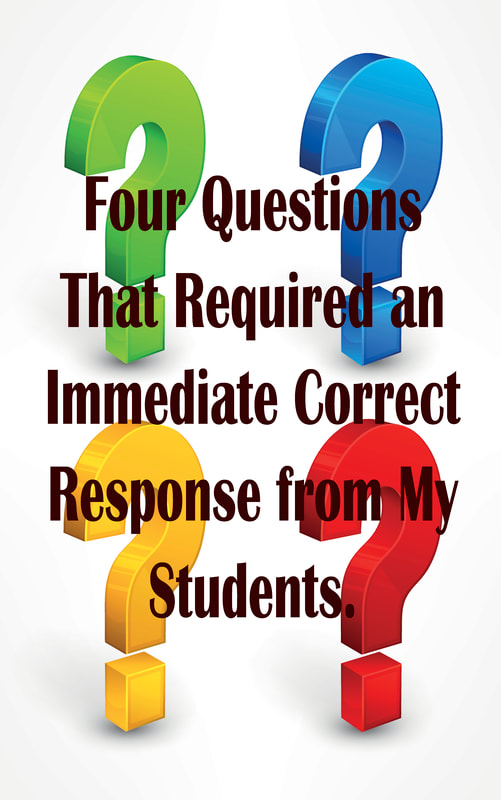
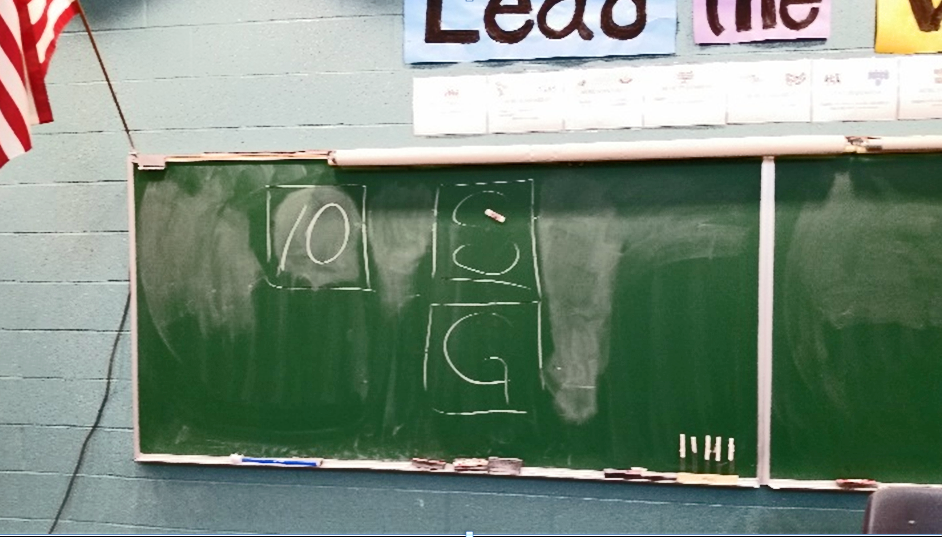
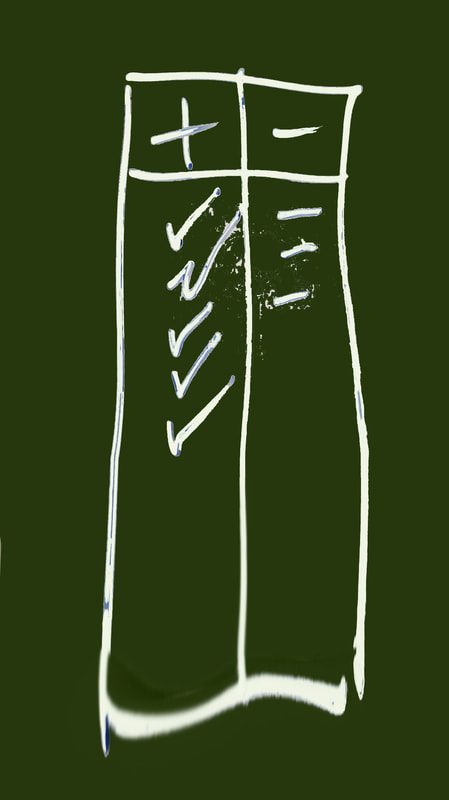
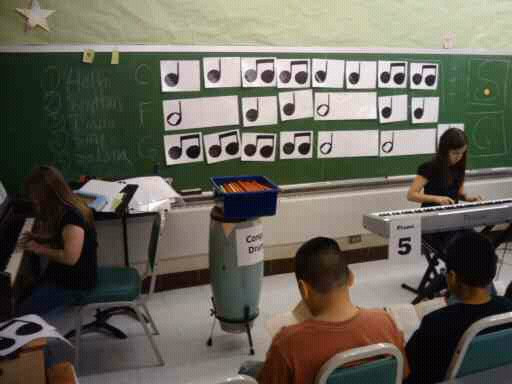
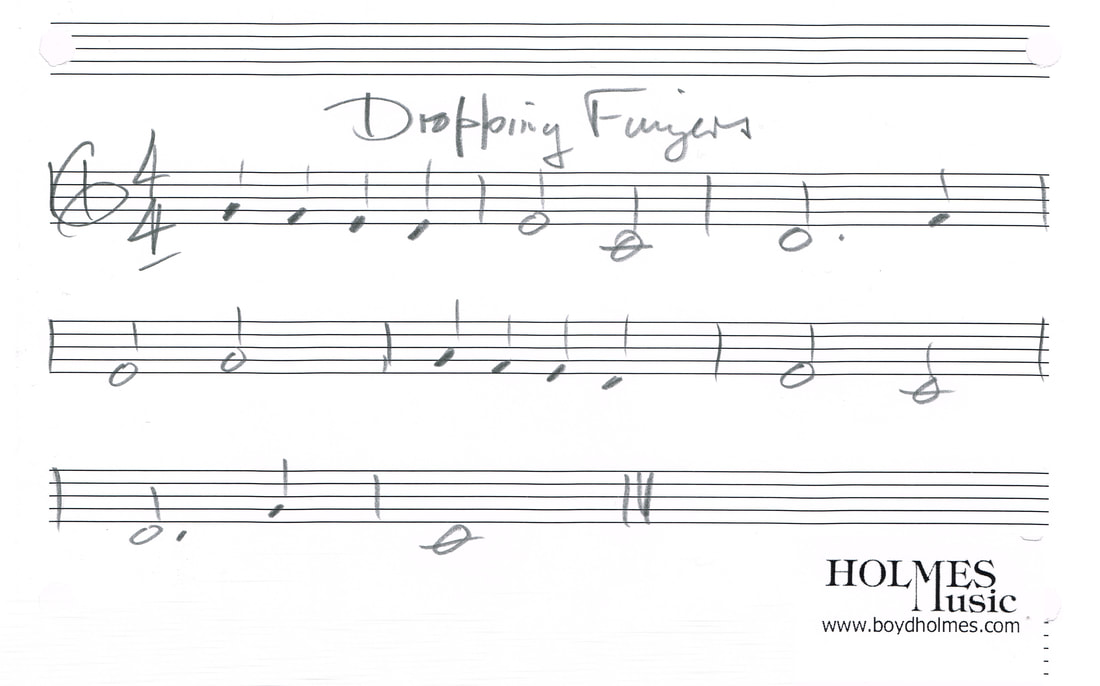
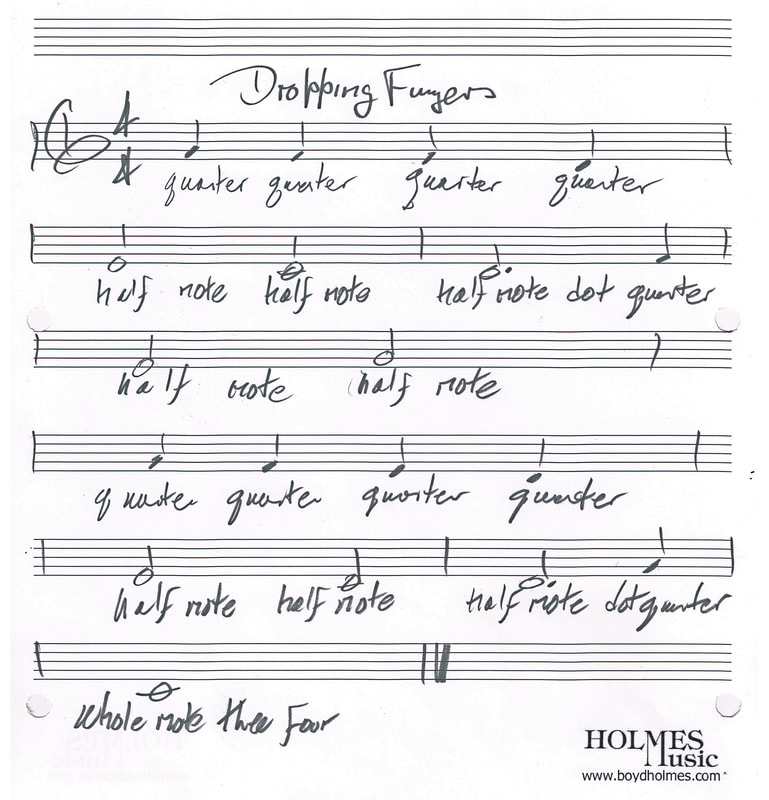
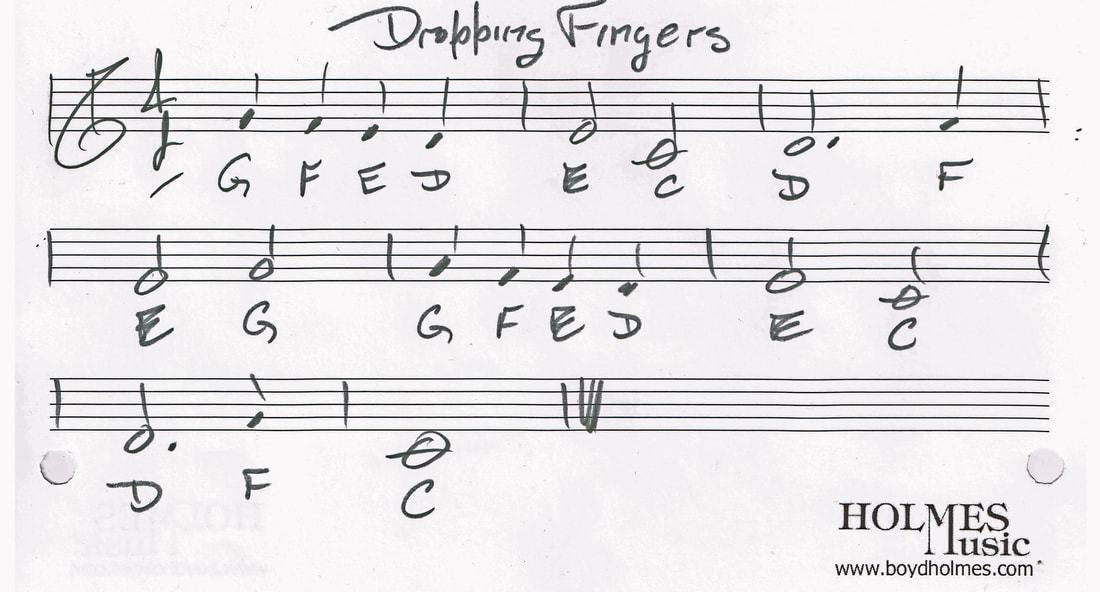
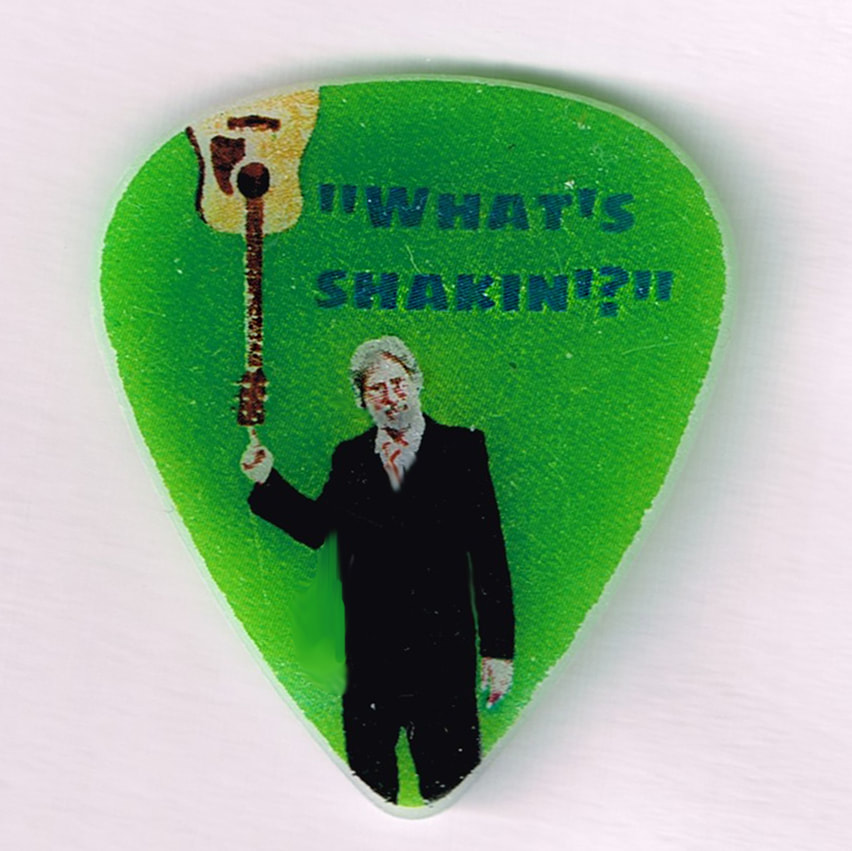
 RSS Feed
RSS Feed